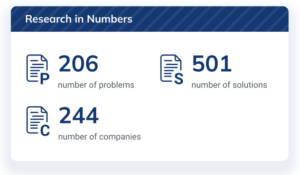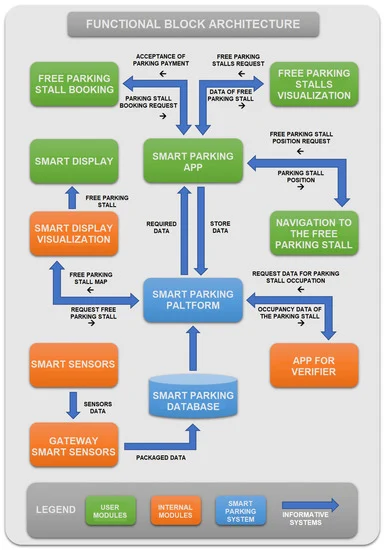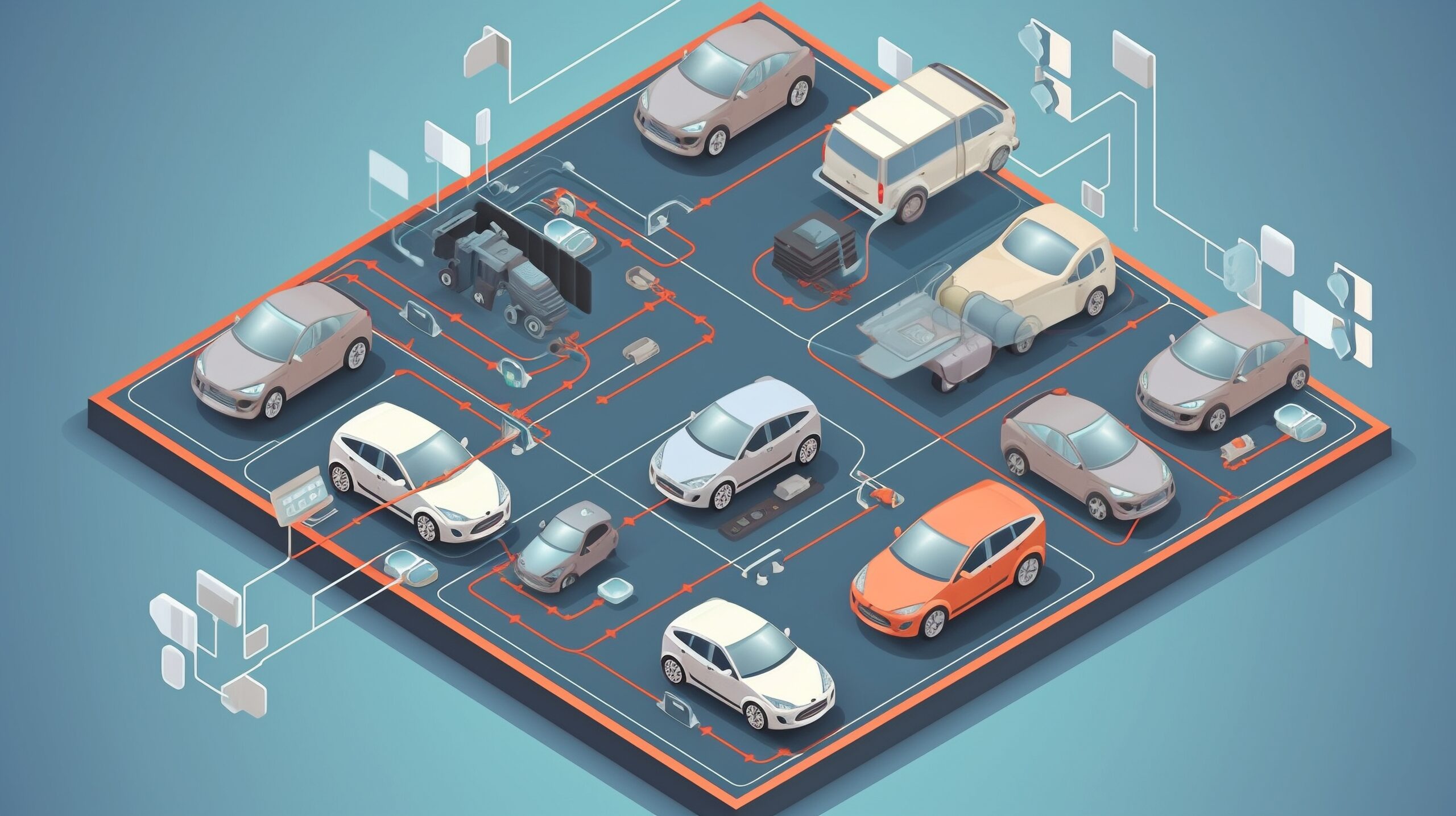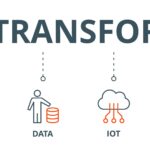
 Revolutionizing Urban Spaces: The Rise of Automated Parking Systems
Revolutionizing Urban Spaces: The Rise of Automated Parking Systems
In an era where urban efficiency is critical, automated parking systems stand at the forefront of innovation, addressing critical issues such as escalating traffic congestion and the shortage of parking spaces.
These systems are redefining automatic parking management by integrating sophisticated technologies like the following:
- RFID
- License Plate Recognition (LPR)
- Cloud computing
These automated parking technologies have played a pivotal role in the advancement of smart mobility solutions, offering unparalleled convenience and efficiency to end users (drivers) and city planners alike.
Automated parking systems streamline the parking experience and contribute significantly to the optimization of urban space, as well as environmental sustainability. For these reasons, automated parking systems are crucial to smart city initiatives globally.
Let’s explore how they work to revolutionize our daily urban interactions.
Navigating the Future of Urban Transportation with Automated Parking Technologies
Automated car parking payment systems are designed to address urban challenges like congestion and inefficient parking management at the root. These systems are engineered to reduce the effort of finding a parking space, thus easing traffic congestion and enhancing the payment process.
Central to their objective is the alleviation of the cumbersome task of parking, which often results in financial burdens and elevated carbon emissions. The systems empower users to locate, reserve, and pay for parking via a mobile app, merging convenience with effectiveness. The following 4 features are the keys to a successful smart parking system.
1. Cloud Computing
Cloud computing is a fundamental component of these systems, enabling the storage and processing of extensive parking data as well as:
- Real-time management
- Scalability
- Reliability
- User accessibility
2. Ultrasonic sensors
Ultrasonic sensors are crucial in identifying vehicles’ presence in parking slots by reflecting sound waves and providing immediate occupancy information.
3. The Internet of Things (IoT)
The Internet of Things (IoT) connects devices and services over the Internet, facilitating autonomous data collection and transfer. This aspect of technology ensures the following:
- Up-to-date parking slot information
- Streamlining system-wide communication
4. Radio-Frequnecy Identification (RFID)
Radio-Frequency Identification (RFID) technology is vital because it allowsthe parking system to recognize authorized vehicles for effortless access, exit, and automated fee deductions from digital wallets.
In essence, automated car parking payment systems fuse technology with convenience, marking a significant stride toward smarter urban mobility solutions. This technological confluence is not just a present-day reality but also a link to the rich history and evolution of parking systems.

From Manual to Modern: The Evolution of Car Parking Systems
The evolution of car parking systems has been a journey from basic manual methods to advanced automated parking technologies. Early systems were hampered by the following:
- Inefficient payment methods
- Limited reservation capabilities
- Poor traffic management
The introduction of License Plate Recognition (LPR) technology, using Automatic Number Plate Recognition (ANPR) cameras, was a significant advancement in automating vehicle tracking and user authentication, albeit often requiring manual payment at exit points.
The emergence of mobile applications marked a transformative leap in parking management. Users gained the ability to locate, reserve, and pay for parking spots with real-time information at their fingertips. Advanced booking options further refined the parking experience, ensuring availability during busy times and reducing time spent searching for spaces.
Today’s systems integrate various technologies to manage traffic within parking facilities effectively. They guide drivers to available spots using sensors and display indicators, thus reducing congestion and improving the user experience.
The convergence of the above mentioned features in contemporary smart parking systems with automatic payment symbolizes this evolution.
They blend the following, making a new era in parking management efficiency:
- Seamless entry and exit
- Automatic payment
- Timely notifications
This technological progression seamlessly leads us to the integration of these systems within the broader context of smart mobility solutions, further enhancing urban transportation networks.
Data-Driven Parking to Enhance User Experience
The smart parking systems market is undergoing a revolutionary shift, fueled by the strategic use of data to enhance the user experience dramatically.
Governments worldwide are investing in smart city projects, integrating advanced parking solutions to tackle the challenges of urbanization and traffic congestion. These initiatives position automated car parking payment systems as vital components in contemporary urban planning.
At the forefront of this transformation is the Internet of Things (IoT), which merges geospatial technology and wireless sensors to manage parking spaces with unparalleled efficiency. IoT devices collect and analyze data, quickly identifying available spots, saving drivers time and fuel, and reducing traffic congestion.
Innovation is central to these advancements, with significant investments in research and development driving the introduction of emergent parking technologies like advanced sensors, data analytics, and mobile apps for slot reservations and online payments.
The systems feature automation and wireless communication – including smart parking meters and Machine-to-Machine (M2M) communication – to monitor and instantly relay parking availability to users through mobile and web apps.
Despite technological progress, challenges remain in raising awareness of smart parking benefits and addressing RFID signal disruptions due to electromagnetic interference, which can affect vehicle tracking. Collaborative efforts between tech providers and market players focus on overcoming these challenges to ensure smooth system functionality, which is critical for user adoption and satisfaction.
By maximizing the potential of data, smart parking systems are set to revolutionize the user experience, making parking more intuitive and efficient, perfectly adjusted to the dynamic pace of smart city life.
This technological evolution not only redefines parking management but also mirrors broader market trends and shifts in consumer behavior, which we will explore in the following section.
The Evolving Market of Automated Parking Systems
The automated parking systems market is experiencing rapid expansion, fueled by the challenges of urban traffic congestion and limited parking availability. These systems’ convenience, improved parking management, and environmental benefits are significantly altering consumer expectations.
According to Grand View Research, the smart parking systems market was valued at USD 6.49 billion in 2022, with projections suggesting an impressive growth to USD 30.16 billion by 2030.

This surge is not solely attributable to technological advancements but reflects a shift in consumer priorities toward more efficient, digitally-oriented solutions. The 5 biggest trends influencing this market are:
1. Technological Advances and Consumer Priorities
Modern users are seeking systems that provide real-time data and mobile accessibility, aligning with trends toward cashless transactions and environmental mindfulness.
2. Smart Mobility Integration and Tech-Savvy Consumers
A key driver of this market expansion is the integration of smart mobility solutions. As urban populations become more tech-savvy, the demand for smartphone-manageable parking solutions, offering features like location finding, reservation, and payment, is increasing. This trend is also supported by a collective move towards reducing carbon footprints.
3. Adapting to Urban Mobility Landscape
The urban mobility landscape is rapidly evolving, especially with the introduction of autonomous and semi-autonomous vehicles. This evolution necessitates adaptable parking systems for these new transportation forms.
4. Personalized Experiences and Customer Satisfaction
Consumer behavior is trending towards personalized experiences and parking is no exception. Smart parking systems leverage data to tailor services to individual preferences, enhancing customer satisfaction and loyalty. As these systems evolve, they are expected to become comprehensive platforms for urban mobility management.
5. Reflecting Changing Societal Needs
The shift in market dynamics highlights a change in consumer behavior, emphasizing convenience, efficiency, and sustainability – especially in urban spaces.
Automated parking systems are becoming essential to urban living, signifying a broader movement towards smarter, more responsive city living. Exploring these trends provides insights into how these systems are not just technological advancements but also reflections of evolving societal needs and expectations.
Navigating the Future: Growth Dynamics of Automated Parking Systems
Thanks to the transformative technologies described above, the automated car parking payment systems market is brimming with potential. These innovations are shaping the future of urban parking because they align so well with smart city objectives to tackle space and traffic challenges effectively.
The Rise of User-Centric Mobile Applications
A critical driver of this growth is the rise of user-centric mobile applications. These apps empower users with real-time information on parking availability and reservation options, meeting the consumer’s demand for instant and flexible solutions. This shift is significantly enhancing the user experience, especially in congested urban areas.
RFID Technology: Automating for Efficiency and Security
RFID technology is revolutionizing automatic parking infrastructure by automating entry and exit points. This advancement ensures efficiency and security, which is particularly beneficial for organizations managing high traffic volumes, promising improved operational control and reduced congestion.
Embracing Digital Transformation with Automatic Payment Systems
The shift towards automatic payment systems mirrors a broader trend toward digitization. Reflecting consumer preferences for cashless and convenient transactions, these systems also feature notification capabilities that promote responsible parking behavior and compliance with regulations, further elevating the user experience.
Market Expansion and Integration with Smart City Initiatives
The market is on the brink of significant expansion. Automated parking systems are becoming a staple in urban planning as smart city initiatives gain momentum. They are expected to integrate with broader city infrastructures, providing essential data for traffic management and urban development.
Potential for Comprehensive Mobility Solutions
The potential integration with other smart transportation services indicates the development of comprehensive mobility solutions. The adaptability of these systems suggests their expansion beyond metropolitan areas, reaching into smaller cities and towns.
Opportunities for Stakeholders
As adoption rates climb, driven by the systems’ maturity and scalability, the automatic parking payment systems market is set for substantial growth. This opens invaluable opportunities for industry stakeholders, from innovators and technology providers to investors and urban planners, to leverage the industry’s progress.
Exploring Key Features and Market Drivers
Here, we delve into the key features and driving forces behind this burgeoning market. This exploration highlights the technological advances propelling the market and underscores the societal and economic factors contributing to its growth.
As we examine these elements, we gain a comprehensive understanding of how automated parking systems are redefining urban mobility and creating new opportunities for smart city development.
Embracing the Future: The Transformative Impact of Automated Parking Systems

The automated car parking payment systems market is undergoing a significant transformation, driven by many factors reshaping urban mobility. At the forefront are the escalating challenges of traffic congestion and the scarcity of parking spaces in burgeoning urban centers.
Automated parking systems provide more than a technological solution, they provide:
- Enhanced parking management
- Increased convenience
- Reduced environmental impact,
- Boosted revenue collection.
Advancements in IoT, cloud computing, RFID, and ultrasonic sensors, coupled with the rise of user-centric mobile applications, are pivotal in this growth. These innovations enhance the efficiency and user-friendliness of parking systems and meet the unique demands of autonomous and semi-autonomous vehicles.
The shift towards mobile-based applications and cashless transactions is streamlining the parking process, from space discovery to payment. As environmental concerns intensify, the demand for systems that minimize emissions by reducing the time spent searching for parking is also growing.
The growth of the automated car parking payment systems market is a multifaceted phenomenon fueled by a combination of technological advancements, government initiatives, and evolving consumer behaviors. This convergence is propelling the automatic parking industry forward and shaping the future of urban landscapes, steering us toward a more efficient, tech-enabled world.
In summary, automated parking systems represent a significant leap in urban mobility solutions, marking a new era in parking management and urban experience. They are key components of sustainable urban development, responding to changes in transportation and consumer trends.
These systems are forerunners of a smarter, more efficient, and sustainable future. As cities continue to evolve, these systems will be pivotal in addressing urbanization challenges, promising enhanced mobility and a shift toward a more responsive, integrated, and intelligent urban ecosystem.
As we embrace this future, the potential of automated parking systems to transform our cities and lifestyles stands as a compelling narrative of progress and innovation.
Sources
- https://www.mdpi.com/2071-1050/15/17/13174
- https://www.grandviewresearch.com/industry-analysis/smart-parking-system-market

